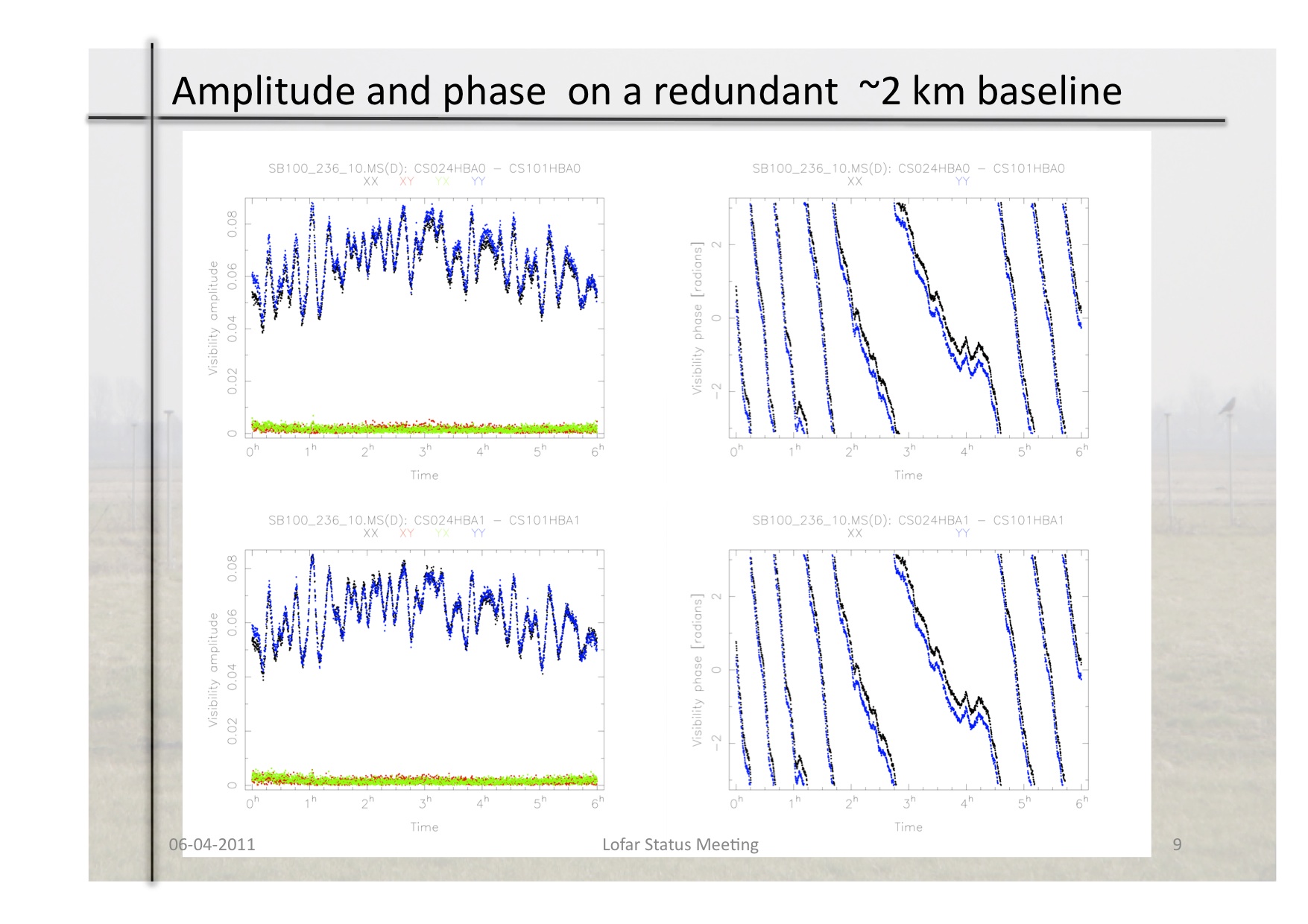Daily Image
22-04-2011Redundant baseline data in LOFAR
| Submitter: | Ger de Bruyn |
| Description: | The current LOFAR core operates with 20 stations, each with 48 high-band tiles and 96 low-band antennas. The 48 high-band tiles in a core station, however, are divided among two sub-stations each with 24 tiles. The substations are separated by 129 meters. This unusual layout was the results of the descope carried out in the Summer of 2007. The split layout gave LOFAR enough core stations to still create a dense uv-coverage, required for e.g. the LOFAR EoR experiment. The 129-meter dumbbells come in only 3 different orientations. This results in a limited set of redundant baselines. The data recorded on redundant baselines have diagnostic value which we are now starting to investigate. The figure show a composition of the raw visibility data (amplitudes left, phases right) on the baselines CS024HBA0-CS101HBA0 (top) and CS024HBA1-CS101HBA1 (bottom). The data refer to a 6h observation in subband 100 at 134.5 MHz of the field of 3C196 taken on 1 April 2011. The structure in the visibility data is due to the many bright sources surrounding 3C196. As one can see they seem to be very similar. The rapid phase drift on this (~ 2 km) baseline is not due to the ionosphere but is a result of the limited stability of the different (rubidium) clocks used on the core stations. Because the signal on both substations is controlled by the same clock the resulting effect on the phase on the redundant baselines should be the same. The limited amount of redundancy in the LOFAR core will not allow the type of model-independent calibration possible with the WSRT (see Noordam and de Bruyn, Nature, 1982). The LOFAR redundant baselines however can, and probably will, play a role in monitoring the quality of the station beams and other factors that influence data quality. |
| Copyright: | ASTRON |
| Tweet |  |
